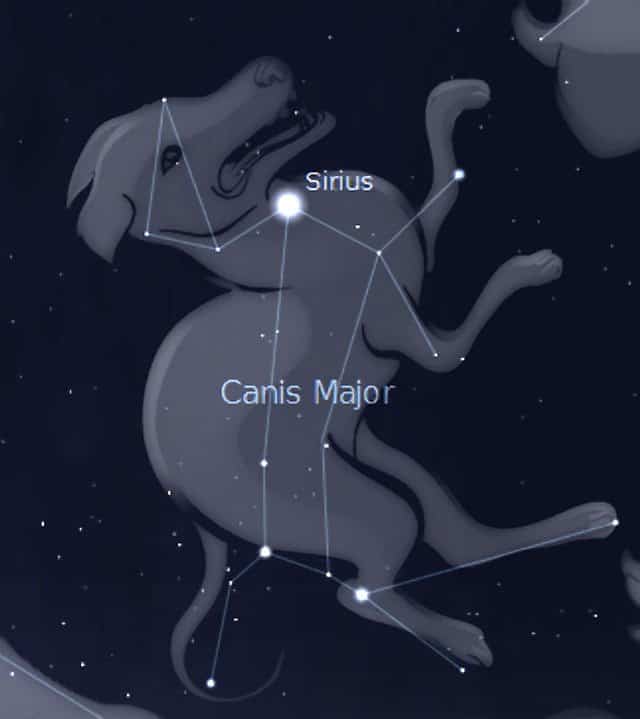
The so-called “Dog Days” of summer in the Northern Hemisphere officially came to an end this week when Sirius, the bright Dog Star, returned to the night sky.
Everyone talks about “Dog Days,” but few may know what the expression actually means. Some might suggest it signifies hot, sultry days “not fit for a dog.” Others, meanwhile, may say it’s the weather in which dogs go mad.
But the actual Dog Days, or “Canicular” days as they’re known, are defined as the period from July 3 through Aug. 11 when the Dog Star, Sirius, rises in conjunction (or nearly so) with the sun.
As a result, the classical Greek and Roman belief was that the combination of the brightest luminary of the day (the sun) and the brightest star of night (Sirius) were responsible for the extreme heat that is experienced during the middle of the northern summer. Other effects, according to the ancients, were droughts, plagues and madness.
A more sensible view was put forward by the astronomer Geminus around 70 B.C. He wrote: “It is generally believed that Sirius produces the heat of the Dog Days, but this is an error, for the star merely marks a season of the year when the sun’s heat is the greatest.”
In ancient Egypt, the New Year began with the return of Sirius. It was, in fact, the “Nile Star” or the “Star of Isis” of the early Egyptians.
This week, just before sunrise, Sirius can again be glimpsed rising just above the southeast horizon for those living in mid-northern latitudes. At more southerly latitudes, Sirius is already conspicuous, twinkling above the horizon at dawn.
Sirius is the brightest star of the constellation Canis Major, the “Greater Dog” in Latin. According to Burnham’s Celestial Handbook other names for it include “The Sparkling One” or “The Scorching One.”
The star appears as a brilliant white light with a tinge of blue, but when the air is unsteady, or when it is low to the horizon as it is now, it seems to flicker and splinter with all the colors of the rainbow. At a distance of just 8.7 light-years, Sirius is the fifth-nearest known star. Among the naked-eye stars, it is the nearest of all, with the sole exception of Alpha Centauri.
So regardless of how hot your local weather is, or has been, the appearance of Sirius — a star we most associate with the winter season — is a subtle reminder that the hottest part of the year is now behind us and a promise that a change toward cooler weather is now only weeks away.
